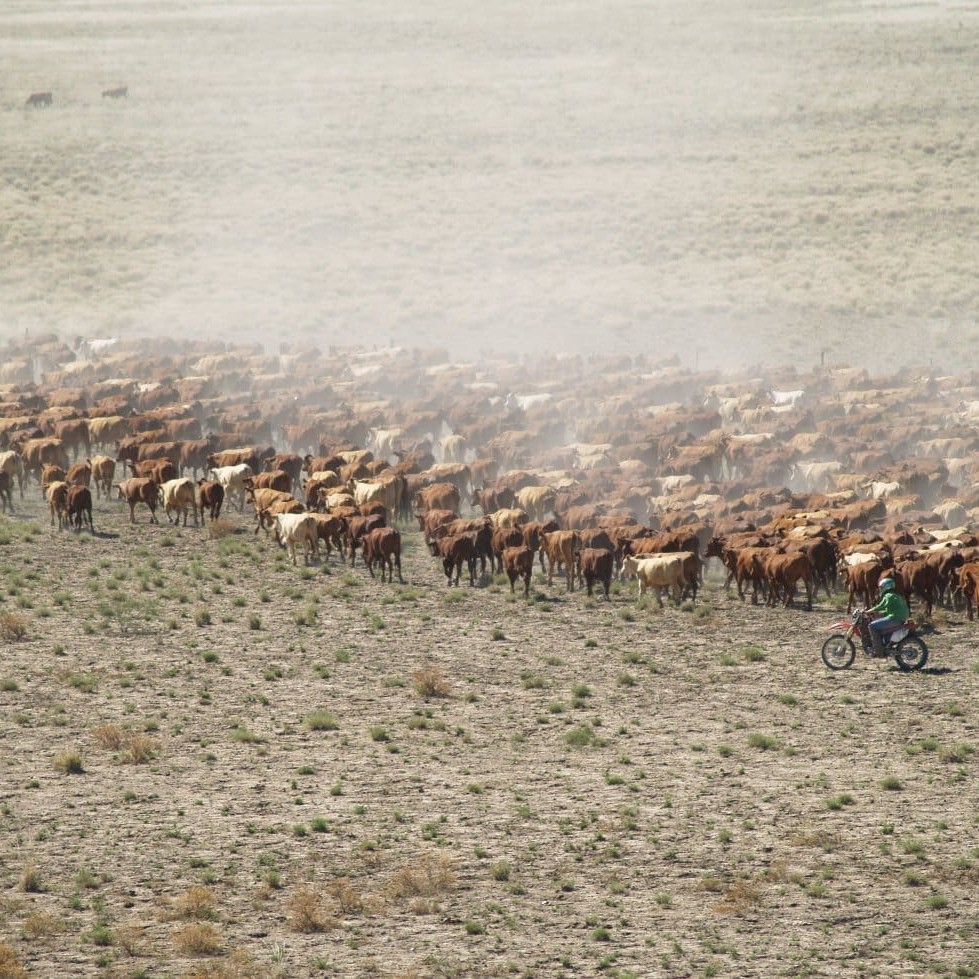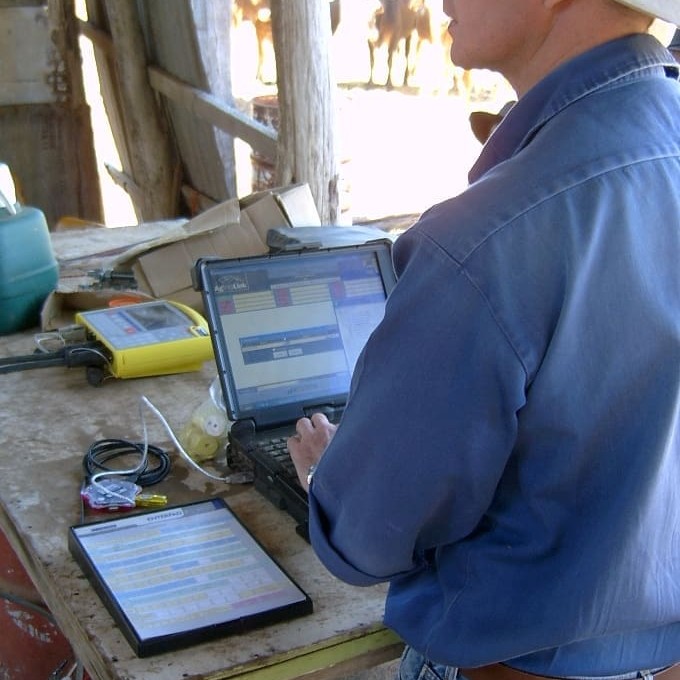 Imagine having detailed individual animal performance on a herd of 600,000 cattle under one owner’s control.
Imagine having detailed individual animal performance on a herd of 600,000 cattle under one owner’s control.
The breakneck pace of technology improvement is delivering a new frontier of cattle management opportunity within the Australian Agricultural Company’s far-flung northern cattle breeding and growing properties.
Fundamental to the operation of the project is the use of NLIS individual animal ID tags on all company cattle of post-branding/weaning age.
“The roll-out of a new computer-based recording and reporting system across all of the company’s cattle yards has been a really important project for us this year,” AA Co chief operating officer Troy Setter told a Beef 2012 seminar yesterday.
“It will take a lot of work, but we are already starting to see the information coming through, in the form of weightgains on individual animals, as well as weightgain numbers on groups involved in different management programs”
“NLIS is a big part of that process in our business now,” he said.
The project is based on the simple premise that ‘if you can’t measure it, you can’t manage it.’
“Where we are heading is in getting greater accuracy and detail in measurements and performance data, and in getting greater accuracy in monitoring what works and what doesn’t, in terms of management actions.”
“The basic starting tool is there, because every weaned animal under AA Co’s management has an NLIS tag in its ear as part of the legislation. We now have the opportunity to get more out of it.”
AA Co is installing a computer system that will allow it to track every animal as they come through the crush or yards, taking weights, body condition score, breed, pregnancy status and other information.
Some company properties have already uploaded initial data on their entire cattle inventory, and the remainder will be completed before the end of the year. Records for each beast can be ‘transferred’ from property to property, in the event of relocation from breeding to growing property, for example.
“We can identify those females having a calf at two years and those having their first calf at three,” Mr Setter said. “We can track the cows that don’t bring a calf through every year; weightgain (or loss, in dry times); breed-type performance; and the outcomes from feeding different types of lick or supplements to weaners, breeders or other groups of cattle in similar paddocks.”
The process will be applied across AA Co’s entire network of 22 properties running around 600,000 head.
While not every animal on every property is yet recorded on the system, every property now has the capacity to record, with 50 ‘Industrial strength’ Notebook computers set up on each property, accessible on every set of cattle yards.
“If we were feeding two different supplements in two adjoining paddocks, for example, we will quickly get to see the performance of each, and get that information in real time data,” Mr Setter said.
“It will allow us to integrate that with some of the other technology like walk-over weighing; automated drafting; automated NLIS scanning in the paddock (near water troughs, for example) allowing cattle to be counted more regularly, and patterns such as watering frequency to be monitored.”
“That will provide useful information, such as how best to split a large 10,000 hectare paddock in two.”
What all this means, of course, is that AA Co is going to end up with a mountain of cattle and management data to deal with. So how best to make some usefuls sense out of that?
 To start with, each station now has operating a wireless data communications network, with a range of up to 30 km. Relay stations can boost wireless range even further, where required. Data can be downloaded to the station homestead office complex from each remote yards site. The process all comes together live, every time a remotely located computer logs-on to the wireless network.
To start with, each station now has operating a wireless data communications network, with a range of up to 30 km. Relay stations can boost wireless range even further, where required. Data can be downloaded to the station homestead office complex from each remote yards site. The process all comes together live, every time a remotely located computer logs-on to the wireless network.
From there, the data is then transmitted via satellite, back to AA Co head office central data collection point in Brisbane.
To do this, AA Co has established its own electronic data supply and access network, through Telstra’s iTerra IP satellite. This provides high-speed, two-way satellite data communication on every station, allowing all records on individual animal and group performance to be transferred to the head-office’s central database.
An IT consultant company has been working for the past eight months writing an SQL system to drive that data collection and management process. The system will allow all staff and managers to log-on, and examine all the collected data on an individual animal or group basis, under different criteria.
It will also allow remote station staff to access data on items like purchase price versus sale price, marketing reports, and even make calls on which cattle to cull, should conditions turn dry and the need occurs for lightening off numbers.
“We can pre-set decision rules on weight, body condition, prior calving performance or other criteria into the computer, and using the automated drafting systems, pre-set those boundaries based on future profitability expectations for each individual animal, and her production records.”
The recording system will also play a vital role on monitoring performance and making future purchase decisions on bought cattle. AA Co currently purchases some 180,000 trading cattle each year to put on grass or through the company feedlots. Prior performance based on the data collected using the new system could play a significant role in ‘chasing that brand’ in future.
“It means we will be able to put a value on suppliers’ livestock for future purchase decisions, based on paddock or feedlot gain or health performance,” Mr Setter said.
The newly-activated satellite data network will also be used for more general internal and external communication. Examples:
- a cow presents with some unusual symptoms in a remote location somewhere. The staffmember present could consult a company veterinarian remotely via the satellite link to seek advice and the right course of action
- the service provides considerable scope for on-line staff training. Progressively, AA Co is moving more of its basic training to on-line and video-based. For the past six months the company has been filming best-practise management and safety principles, some as basic as how to get on-and-off a horse, or drive a truck. This will be used both for induction of new staff, and in a more advanced form, giving existing staff some reinforcing messages about how to go about their duties safely and effectively.
- Providing staff with a reliable, high speed internet service so they can keep closer touch with family and friends, and for entertainment
- The company is also moving to voice-over internet and video conferencing, replacing some face-to-face meetings between station and regional managers in remote locations with video conference links. This offers big potential time savings
- Providing an ‘intranet/chat room’ style format for staff, as a means of spreading good ideas or better ways of doing things, through a more casual communications medium.
Labour efficiency implications?
Asked whether the entire system including automation in weighing and drafting through the yards, and data recording offered labour saving potential, Mr Setter said this year, labour would actually be up a little due to the initial installations and uploading of initial base animal data.
“From next year, however, we expect to see some efficiency gains in labour. Early responses from managers suggest that while initially, there is a little more time required in the yards, outside the yards savings are already being seen, in not having to add counts and check numbers, for example, and allowing each report to be emailed through to headquarters before the cattle exit the yards.”
One of the advantages in employing so many young livestock team members across company properties was that many came ‘pre-loaded’ with solid computer and technology knowledge.
“Many actually enjoy the extension of their day to day roles involving a little more computer/information transfer work,” Mr Setter said. “It also means they can become more ‘involved’ in the business, rather than just being a ‘worker’. They can take some greater responsibility and be more actively engaged in the business, and how the cattle are performing. We openly share our profitability and financial information with our staff.”
“Having said that, many of the systems that have been installed are intuitive, touch-screen, and are no more complicated than using an iPhone.”
While the old UHF radio communications medium still has its application in internal property comms, the older technology is also being used in new and novel ways. One is the ability to remotely control turning bores and pumps on and off.
“This whole process is about getting people to think about animals as individuals, even though we run large mobs of animals together,” Mr Setter said.
“If we can select individuals on tighter specifications based on their specific performance, rather than as a group, we can potentially harvest a lot of benefit. Additionally using the GeneStar DNA test or parentage, we can start to identify the elite individual performers in traits like fertility and growth and apply more selection pressure on them.”
Beef Central’s free supplier plugs:
Companies engaged by AA Co to deliver the component parts of the company’s new groundbreaking computer-based reporting and recording system included:
- Livestock Exchange, a major supplier of NLIS software solutions to Australian saleyards, agents and private producers
- Sydney-based IT company, Envoy, wrote the program software
- AA Co pays a subscription to access Telstra’s iTerra IP satellite service for its high-speed property/property and property/head office data transfer.
- Ordyss technical support and project services
- AA Co has regular job listings posted on Beef Central’s ‘Jobs Central’ recruitment page. Click here to view.
